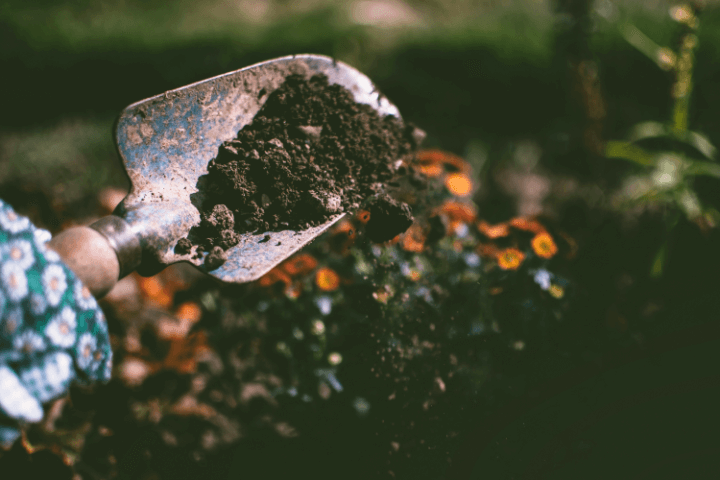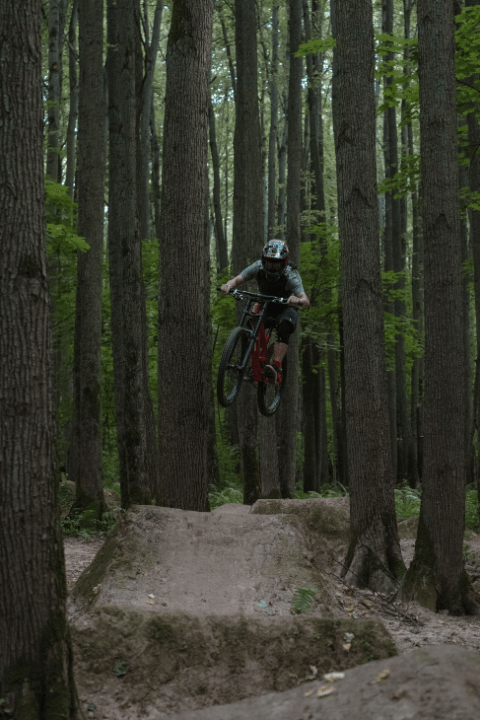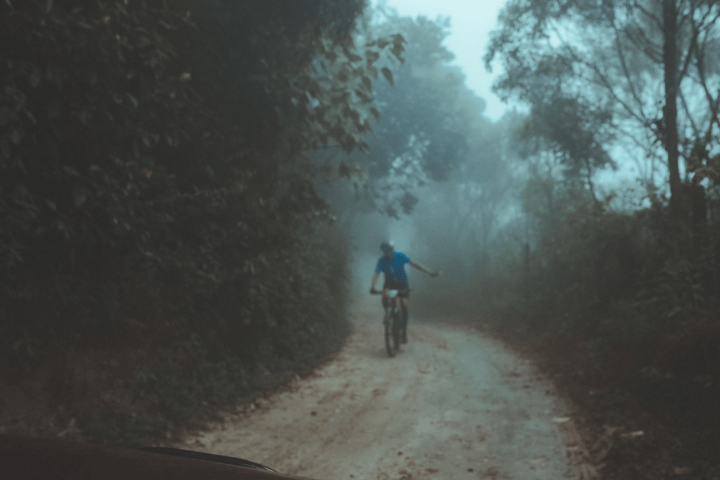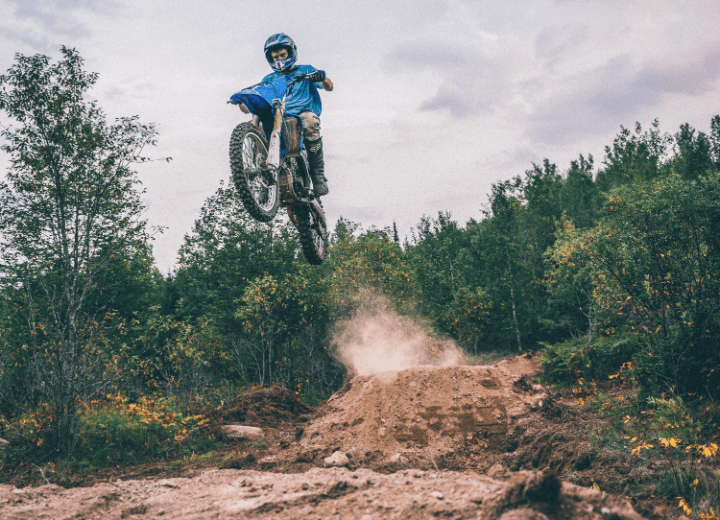Unlike skateparks, dirt jump tracks and parks are normally built by an individual or a small group of riders for their personal use. Skateparks on the other hand are usually planned and built by councils, committees or companies. This is why these rules don’t apply in the same way when riding them.
If someone spends many hours building something exactly how they imagined it, they’re likely going to be a little picky about how people treat their creation. This post is going to go through the common rules every DJ rider should adhere to if they’re riding someone else’s trails or jumps.
Feel free to add any of your own rules to the comments below.
Permission
This is an important one. People have slightly different opinions on gaining permission before riding trails. The main rule is that, if possible, you should always ask the builder’s permission before riding their jumps.
Firstly, it’s rude to use and potentially damage something that someone else has spent a lot of time and effort creating. You don’t have a clue which trails and jumps are ready to be ridden and which ones are simply not ready yet.
This brings up the element of safety. It’s likely no official health and safety checks have been carried out on the jumps you want to ride. If you’re inexperienced, don’t have permission and then go and ride someone else’s jumps then you’re potentially creating a lot of risk for you and the builders.
Personally, I have different beliefs about old trails or jumps that haven’t been maintained for some time. Where I live there are a lot of small trails and jumps that were created by people who have since moved away.
This is usually obvious just by looking at the jumps as they are dilapidated and almost disintegrating. In this case, if you can’t ask the builder’s permission and you’re able to improve the jumps yourself then you should do. Inherit these jumps as your own, following the rest of the rules and making sure you improve, not destroy.
Dig BEFORE you Ride

“No Dig No Ride” and “Dig Before you Ride” are quotes you may hear from time to time. There is a lot more to these phrases than you first imagine.
Simply digging new features on someone else’s trails is a big NO, as you’ll read about next. Digging before you ride means you either help maintain the trails or you help the trail builder/owner with whatever they need help with.
Since most dirt jump tracks are free to use you should look at this as your entry fee. It’s unlikely you’ll need to supply much of your own equipment but there’s always something that will need doing.
Regularly helping out at your local trails will get you recognised and appreciated. Before long you’ll likely gain more access to building new features, if that’s what you’re interested in.
Maintain, Don’t Alter
As briefly mentioned above, maintenance is all you should be doing when you’re new to a set of dirt jumps. Whether you think a trail could flow better; you think a landing is too steep or if a certain jump is just too difficult for you, it’s not your place to alter without permission.
Re-shaping is another thing many riders seem to think they’re entitled to without the trail builders’ permission. Re-shaping often quickly turns into a total redesign of a total jump. A lot of time will have gone into your local trails. For you to completely change certain aspects without any consultation is a big NO.
For those new to dirt jumping, maintenance can come in many forms. Removing weeds, finding wood, watering trails, sweeping, picking up rubbish and digging new dirt are all helpful to trail builders.
Repair any Damage you Cause

You’ll likely case a jump or skid out at some point during your ride, especially if you’re a newer rider. Skidding as you approach a jump is common when you’re first starting. You may not immediately have the courage to hit a large jump; or, commonly, you lose your momentum between jumps, causing the need to bail out before hitting the jump.
Dirt is vastly different throughout the world. All with their own properties that significantly affect what it’s like to build and ride. Skidding on the takeoff of one type of dirt may tear up a lot of dirt whereas another may not be affected at all. The age and density of the jumps will also affect the damage caused by riding mistakes. Jumps that have been ridden many times are far more compact and will suffer less when hard riding occurs.
To prevent damage caused to dirt jumps there are a few things you can do. Firstly, just don’t skid on the takeoffs. Secondly, always pack some dirt back onto the jump if you cause damage to the landings.
If you’re working up to a certain jump then temporarily use a carpet or other covering on the landing. As well as being good at protecting the jumps against weather, these coverings will also prevent you from damaging the lip as much.
Litter and Cleaning Up

This one is obvious, just don’t litter. It’s very common for riders to bring a packed lunch to the dirt jumps. Most trail builders have had so much trouble with litter they have installed some form of a rubbish bin somewhere on the trails.
Have a look around for the makeshift bin. If you can’t find it then just take your rubbish with you. A badly littered jump track will only attract the wrong sort of attention.
Leave What you Find
A lot of trails aren’t easily accessible, requiring you to walk through woodland. For this reason, it’s common for builders to leave building equipment at the trails. Nobody has the time or energy to trek shovels, brooms and wheelbarrows through woods and up hills every few days.
If you find this building equipment, leave it where you find it. Stealing or moving this equipment will only prevent these trails from being developed.
Using other people’s tools should really only be done with their permission. If you desperately need a shovel or brush to fix an area of the track then you should use what you have available and simply leave everything where you found it.
Taking your own tools to a trail is obviously okay. Just hide them well and be prepared to never see them again.
Ride in Appropriate Weather

As I mentioned above, different dirt reacts very differently to riding abuse and harsh weather conditions. Riding in wet and muddy conditions will ruin most dirt jumps. Your tires will create divots and the disturbed water will flood the rest of the jumps. Always try to wait for dry weather before riding dirt jumps.
Acceptable Vehicles

It’s commonly quite difficult to find areas where it’s acceptable to ride motorised vehicles like dirt bikes, quads, mini motos and RC cars. It’s annoying how inaccessible these hobbies are sometimes but bike dirt jumps aren’t the place to ride.
These jumps are specifically designed and built with dirt jump mountain bikes in mind. Any heavier-duty bikes will immediately damage the construction as they weren’t built with this amount of force in mind.
The police also normally have an issue with motorised vehicles tearing around local woodland. It’s noisy and dangerous and many people don’t like them being in such proximity to their bike rides or dog walks.


